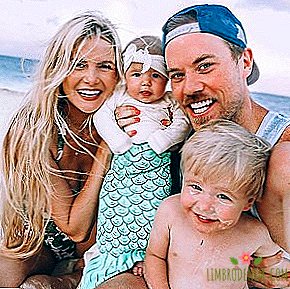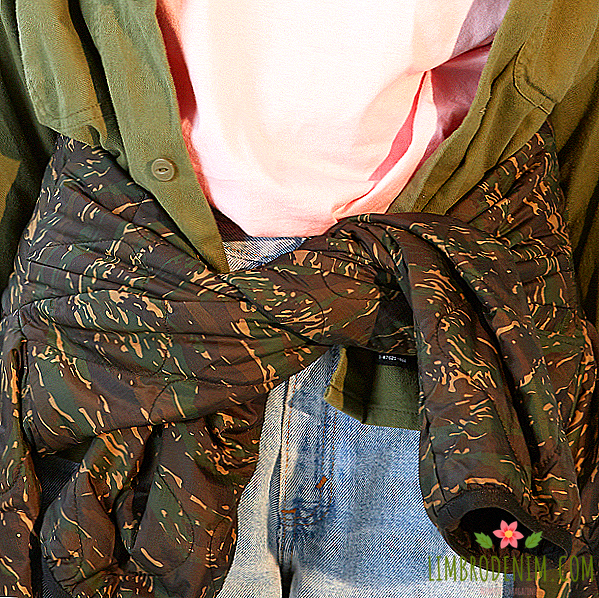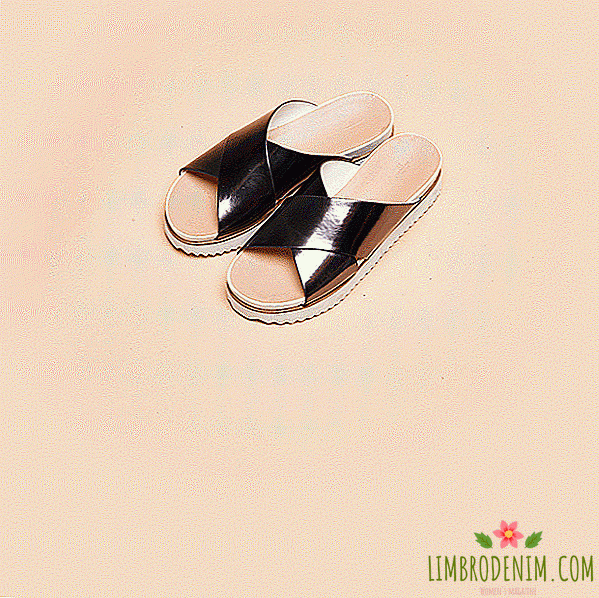Mom, Dad, I: How we sell the image of an ideal family
Happy married couple and two of their charming blonde babies - this is what a typical Instagram photo of Amber Fillerap Clark looks like. Amber is the author of the Barefoot Blonde blog, in which she talks about her life and gives advice on style and personal care. Instagram Ember - the continuation of the blog, the account has more than a million subscribers. Amber makes complicated styling and is always perfectly made up, her children - a boy and a girl - in the pictures laugh happily or sleep quietly; together with her husband David they travel a lot and always take children with them - it seems that this is how an ideal family looks like in our view.

We are increasingly talking about combating beauty standards and traditional gender roles, and monogamous heterosexual relationships have long ceased to be the only option of the norm. But when it comes to the ideal, it seems that since the middle of the last century, nothing has changed. In the media, advertising and social networks, we see the same image of the nuclear family: a conventionally beautiful pair of parents with a Nordic type of appearance and their educated and smiling children.
A quick glance at well-known bloggers mothers with hundreds of thousands of subscribers only confirms this idea: popularity comes mainly to people with the same type of appearance and about the same lifestyle - from Angie Kaiser, mother of little Meyhem (this is a pseudonym of the girl) who in 4 years came up with capsule collection for J.Crew, and the ever-traveling family of Courtney Adamo, to the mother of two daughters Ilana Wiles and the co-founder of Mother Magazine James Kissinsky-McCoy, who has four children.
The same situation exists among YouTube bloggers telling about the life of their family: the million-plus accounts of SHAYTARDS, SACCONEJOLYs and Eh Bee Family belong to very similar families. Although, of course, there are exceptions - for example, California blogger Joy Cho, the creator of lifestyle brand Oh Joy !, which includes a blog, a page on Facebook and a YouTube channel with video tutorials. Joy's instagram has only 300,000 subscribers, but she managed to achieve incredible success on Pinterest: almost 13 million people subscribed to her. Or beauty blogger Judy, whose YouTube channel has over a million subscribers: a video that tells how her birth went, over two years, more than 18 million people watched.
Social networks were created in order to share moments from their lives with friends, so when we look into someone else's account, we get the impression that we see the everyday life of another person and his family as they really are. In reality, everything is more complicated: in Amber Fillerap Clark's account, for example, there are many pictures from travels, but there are no shots preceding the holidays and taken during long transatlantic flights with children - with the exception of a selfie from the airport or a photo with luggage. Popular lifestyle-style blogs that we used to perceive as amateur photo albums are often full-fledged work of their authors. There is nothing reprehensible in this - just as in the case of any other social networks, the main thing is to be able to critically perceive what you see.
Instagram bloggers often promote products and services, together with them consciously or unconsciously promoting the image of their family and a certain lifestyle - the ideal thing is embedded in the story of the life of an ideal family. For example, Russian instagram blogger Lena Koshkina, a photographer and a mother of three daughters, acts like this: in the captions to the pictures of her children, the names of brands of strollers, bed linen and clothes flash every now and then. This can be seen in the instagram of Jerusalembazar founder Tanya Lieberman: photos of jewelry that she sells, interspersed with pictures of her three children.
The image of an ideal family, as well as half a century ago, still attracts and helps to sell goods and services, which is why the image of the traditional family is so often used in commercials. In Russia, with its help, products are often advertised (it is believed that eating together is the most "family" activity): mayonnaise, chocolate, yogurt, seasonings and even ready-to-cook foods. At the same time in different commercials appear the same type of characters: light-skinned and most often fair-haired, less often - with dark hair, but always with a perfect smile. Very often, the characters of the video are represented by a “traditional” family brought up in village or Soviet traditions, in which there are several children and a beloved grandmother.
In the ideal TV family, roles are also traditionally distributed: women are engaged in cleaning, cooking and taking care of children, men do not cook anything more difficult than sausages, and if they take up household chores, then this is unsuccessful for them (though sometimes they help women in secret and get paid for This is a double dose of gratitude). Advertising of baby food "Frutonyan", designed for both mothers and fathers, is one of the few exceptions. Sexist advertising of the 60s now seems to be something from the distant past - but is modern Russian advertising industry so far from these principles?
This problem exists not only in Russia. Recently, Unilever promised to abandon sexist stereotypes in advertising: according to their survey, 40% of women do not identify themselves with what they see in commercials. Changes do not come quickly, but it is obvious that the time has come: the Unilever brand Knorr, for example, has already changed its strategy - in its commercials, now it’s not mother and daughter who are preparing, but father and adult son.
But the distribution of gender roles is only part of the problem. In most commercials, only one type of family is still represented - a heterosexual couple of European appearance with an average level of wealth. Some advertisers are trying to change the situation: Campbell's soups, for example, have launched an ironic campaign dedicated to "real" families and "real" family life. The heroes of the series of videos, among others, were a same-sex couple with a child, a Latin American family and an American family of Asian origin. The video with a same-sex couple provoked simultaneously a wave of approval and a strong negative reaction: the conservative group One Million Moms opposed advertising and even called for boycotting Campbell's products.
This is not the only case of homophobia associated with the advertising industry: Guido Barilla, president of pasta-making Italian company Barilla, in 2013 explicitly stated that only “traditional” families would appear in the brand’s advertising, and if customers are dissatisfied with it pasta. Later, the company promised to make its advertising more inclusive and diverse, and Guido Barilla met with activists for gay rights. Against this background, the advertising of the Italian company Findus, which produces semi-finished products, stands out in particular: in her son at dinner, as if in between times, admits to the mother that he is gay, and the mother takes it quite calmly - an example worth adopting.

Another problem of advertising aimed at a family audience is, with rare exceptions, there is no racial diversity in it. Ceer producer Cheerios in 2013 released an advertisement with an interracial couple, and although the audience perceived the video positively, because of the large number of racist comments on YouTube, the producers decided to turn off comments on the video. With a similar situation, but already on Twitter, the brand Old Navy ran into, posting an ad for an interracial couple. It is even more difficult to see people with disabilities in advertising, although there are rare exceptions: the American banking company Wells Fargo, for example, has released a video where a same-sex couple decides to adopt a deaf girl.
The result is a vicious circle: advertisers do not offer buyers a new image, because they think that they are not ready for change, and buyers are increasingly getting used to stereotypical, standardized families and do not notice the scale of the problem. That is why it is too early to talk about serious changes: commercials with heroes different from generally accepted standards are actively discussed precisely because they are embedded in a uniform context and are still perceived as an exception to the rules, and not as a rule. On Russian television, a married couple of different nationalities can only be seen in sitcoms like "The Last of Magikyan", where the difference of mentalities is used to create a comic effect. The rest of the family on the Russian TV screen is still traditional: even in the series "Daddy's Daughter", which began as a story about a single father, a mother appears later.
According to the head of Rosstat, Alexander Surinov, about a quarter of children in Russia are born outside a registered marriage. At the same time, in half of the cases, children are registered at the request of both parents (that is, both parents are ready to recognize the child as their own), and in the second half of cases - only at the request of the mother. The traditional family model, where children are born in a registered marriage of a heterosexual couple, gradually ceases to be perceived as the only possible one. But neither the advertising industry nor the entertainment industry seems to be ready to accept it yet: to present the American Family TV series on Russian television, and in Russian advertising it’s impossible, alas, for the same-sex or interracial couple.
Photo: Barefoot Blonde, Amber Fillerup Clark / Instagram, Old Navy





